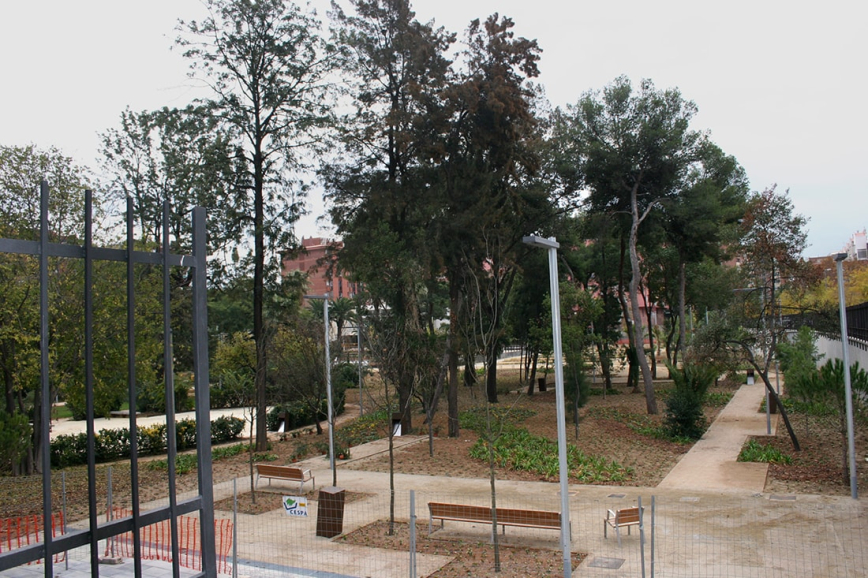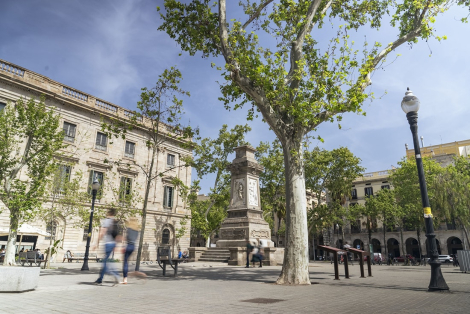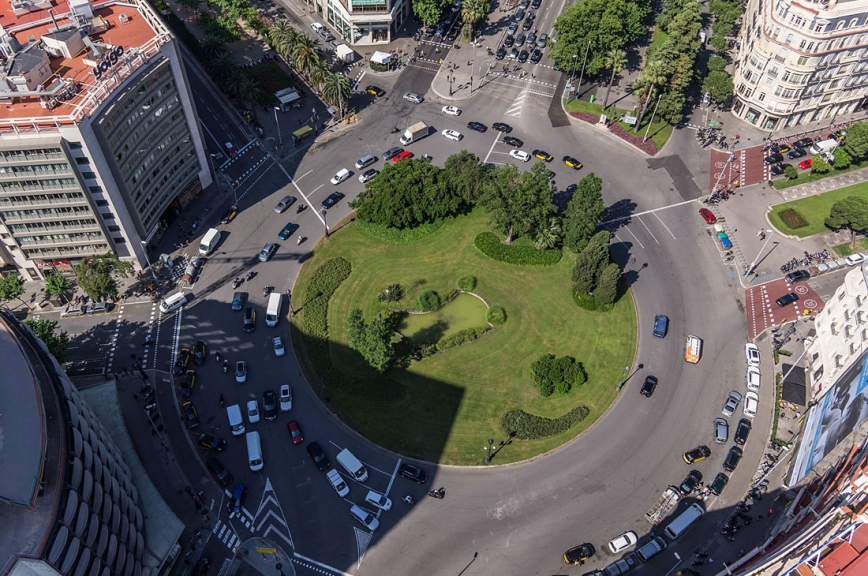The struggle surrounding street and square names in democratic Barcelona
- Urban visions
- Jan 23
- 9 mins

The changes made to the names of the city’s streets and squares are a reflection of each municipal mandate. By action or omission, the names of streets and squares speaks volumes about the ideological essence of each period. Since the Franco period came to an end and the Street Naming Committee was set up in 1980, the changes that have been made can be seen – and how they may be interpreted – during the terms of office of mayors Serra, Maragall, Clos, Hereu, Trias and Colau.
Street naming has been of paramount importance in political representation and the management of memory. Over time, street and square names have been changed in tandem with the different municipal powers, providing a fairly accurate picture of each stage in our history. This has been especially true in the 19th and 20th centuries, when the successive names of the same place show us the permanent struggle to build a narrative that reinforces certain value systems. No public dedication is ever without fault; street and square naming is a veritable battlefield that produces rivers of ink in the newspapers, and often sparks debate.
After the whirlwind of changes during the Republican period and the subsequent Franco regime, names were not a priority for Barcelona’s pre-democratic city councils between 1976 and 1979. Besides a few specific changes, the debate centred mainly on the language of the signage, a demand that was taken up by the campaign ‘El català al carrer’ [Catalan on the Street] advocated by the Congress of Catalan Culture in 1977. Thus, the major transformations would have to wait until the first democratic city council.
 During Joan Clos’s term of office, the Jardins dels Drets Humans [Human Rights] gardens in the Marina de Port neighbourhood were given this name, and streets and squares were dedicated to Martin Luther King, Gandhi and Amnesty International. © Urban Ecology Department. Barcelona City Council
During Joan Clos’s term of office, the Jardins dels Drets Humans [Human Rights] gardens in the Marina de Port neighbourhood were given this name, and streets and squares were dedicated to Martin Luther King, Gandhi and Amnesty International. © Urban Ecology Department. Barcelona City CouncilWith municipal power in the hands of Narcís Serra, between 1979 and 1982, Avinguda Diagonal, Avinguda del Paral·lel and Gran Via de les Corts Catalanes were given their original names. The former names of some sixty streets were also reinstated, such as Via Laietana and Nou de la Rambla, while the thoroughfare Avinguda de les Drassanes, the square Plaça de Francesc Macià and the boulevard Passeig de Lluís Companys were renamed. All of these decisions were emotionally charged. In the end, the names were finally written in Catalan and, in 1980, the Ponència de Nomenclàtor [Street-Naming Commission) was set up. This was probably the most dynamic period in terms of changes, dedicated to removing the street and square names given during the dictatorship.
During Pasqual Maragall’s term of office, between 1982 and 1997, traditional names were reinstated, such as Torrent de l’Olla, Rambla del Poblenou, Carrer del Bisbe and Plaça de la Revolució del 1868. New public places were inaugurated, whose names were of a highly political and protest-oriented nature, such as the squares of Salvador Allende, John F. Kennedy, Karl Marx and Buenaventura Durruti, Països Catalans and Primer de Maig. However, the main transformation during this period was the result of the organisation of the 1992 Olympic Games, which led to major changes in specific areas of Barcelona, such as Port Vell, Poblenou and Montjuïc.
In Joan Clos’s council, the naming of streets and squares adopted a more neutral approach, dedicated to commemorating humanitarian causes.
This mandate saw the appearance of places such as Plaça dels Voluntaris Olímpics, Passeig de Minici Natal and Carrer de Pierre de Coubertin. Some places were renamed and adapted to the new times, such as the squares of Poble Romaní, Alfonso Comín and John Lennon, and the avenues of Josep Vicenç Foix and Manuel Azaña. Worth mentioning is the controversial change of the Paseo Nacional de la Barceloneta, in 1993, which echoed pro-Franco sympathies despite the fact that it was a 19th century street commemorating the National Militia, and was renamed Passeig de Joan de Borbó.
 Plaça d’Antonio López has recently been renamed after Idrissa Diallo, an African migrant who died in the Zona Franca Immigration Detention Centre. © Imatges Barcelona / Àlex Losada
Plaça d’Antonio López has recently been renamed after Idrissa Diallo, an African migrant who died in the Zona Franca Immigration Detention Centre. © Imatges Barcelona / Àlex LosadaThe next city council was that of Joan Clos, between 1997 and 2006, which was marked by continuity. In the wake of the Olympic dream, the 22@ district and the 2004 Forum of Cultures came into being. The naming of streets and squares adopted a more neutral approach, dedicated to commemorating humanitarian causes. Thus, streets such as Martin Luther King and Amnistia Internacional, the Jardins de Gandhi and Jardins dels Drets Humans [Human Rights] gardens, and the Ernest Lluch and Willy Brandt squares made their appearance. So did the Rambla del Raval, where the aim was to calm traffic in its vicinity in the south part of the neighbourhood.
This was followed by Jordi Hereu’s term of office, between 2006 and 2011, who was at the centre of the failed referendum on the remodelling of the Diagonal, which went no further than renaming the avenues Vallcarca and Francesc Ferrer i Guàrdia and the Jardins de la Segona Républica gardens. The two most significant changes during his mandate were the renaming of the former Plaça de Rius i Taulet to Vila de Gràcia; and, above all, the neighbourhood campaign against Carrer Duc de la Victòria, dedicated to Baldomero Espartero, the general who bombed Barcelona in 1842, which was given the more understated name of Carrer del Duc.
After two councils that were less confrontational when it came to street and square naming, Xavier Trias’ term of office, between 2011 and 2015, brought new controversies. The first occurred in 2012, when the name plaque in the passage Passatge de La Canadenca, which commemorated the 1919 strike, was replaced by another commemorating the company’s founder, Fred Stark Pearson. On that occasion, the council was forced to return the original signage. The following year, the debate revolved around the municipal plan to rename the Passeig Olímpic de Montjuïc, changing it to Passeig de Joan Antoni Samaranch. The idea did not work out either. In fact, during the Trias government, few changes came into effect, apart from the square Plaça de Josep Puig i Cadafalch, the street Carrer de John Maynard Keynes and the Parc de Winston Churchill. Special mention should be made of the dedication of two gardens in the neighbourhood of Les Corts to women, namely, Maria Àngels Anglada and Maria Teresa Vernet.
 Plaça de Francesc Macià was given this name during Narcís Serra’s term of office, when Avinguda Diagonal reverted to its original name. © Imatges Barcelona / AL PHT Air Picture TAVISA
Plaça de Francesc Macià was given this name during Narcís Serra’s term of office, when Avinguda Diagonal reverted to its original name. © Imatges Barcelona / AL PHT Air Picture TAVISAThe arrival of the current mayor, Ada Colau, in 2015 brought an upsurge of changes that had not been witnessed since the times of Serra or Maragall. The approach adopted was characterised, on the one hand, by the removal of the last remaining names from the Franco era: Ramiro de Maeztu was replaced by Ana María Matute and Aviador Franco by Mecànic Pablo Rada. Moreover, monarchist names were eliminated, as in the case of the square Plaça de Joan Carles I, now called Cinc d’Oros; the Jardins del Príncep de Girona i dels Infants gardens, renamed Jardins del Baix Guinardó i Magalí; or the avenues of Borbó and Príncep d’Astúries, renamed Quinze and Riera de Cassoles, respectively. Places dedicated to feminism have also been remodelled, such as the Plaça del Vuit de Març, or to the working class, such as the Plaça del Moviment Obrer.
Among the most controversial actions during this term of office are the conversion of Carrer de l’Almirall Cervera to Carrer de Pepe Rubianes and Carrer del Secretari Coloma to Carrer de Pau Alsina. And, above all, the contentious change of name of Plaça d’Antonio López, turned into the squares of Plaça de Correus and Plaça d’Idrissa Diallo, an African migrant who died in the Zona Franca Immigration Detention Centre. Also replaced was the former street name of Sant Domènec del Call with Salomó ben Adret, thus commemorating Barcelona’s old Jewish quarter.
The most recent changes have sought to increase the number of streets named after women.
Among the most recent changes are several streets and squares dedicated to women, in an endeavour to redress the gender imbalance in the city’s street names. On 8 October, the Plaça d’Angelina Trallero was inaugurated in Sarrià, and the streets Dolors Batlle, Elisa Moragas and Emília Llorca, the squares Carmen Balcells and Treballadores de la Numax, the gardens of Margarita Brender and Carme Claramunt, and the passage of Dolors Canals were approved. Still pending are the proposals passed in March 2022 to dedicate squares to Valerie Powles, Rosa Galobardes, Ramona Fossas, Lolita Torrentó, Francesca Vergés and Lluïsa Alba, and streets to Felícia Fuster and Josefa Vilaret “La Negreta”, the latter to replace the current Carrer del Duc. There is also a project to rename Passeig Marítim, dedicating it to Oriol Bohigas, Avinguda de la Reina Maria Cristina to Avinguda de Catalunya, Passeig d’Isabel II to Passeig de Mar and Plaça de la Reina Maria Cristina to Carme Claramunt, the first woman to be executed by the Franco regime in the post-war period.
Future initiatives, many of them arising from the neighbourhood movement, could involve changing Gran Via de Carles III to Ronda de Les Corts, renaming the Emperador Carles I park in memory of the writer Mercè Rodoreda, or naming Carrer de Joan Güell in Sants after Núria Feliu. The next elections will tell us whether these changes are to gain momentum. Or whether the ideological bias shall change again, and with it the name and memory of our streets. Whatever the outcome, the symbolic significance of the small marble plaques that lend meaning to city life will once again find its way onto the pages of the newspapers. And we will be on hand to discuss it.
The newsletter
Subscribe to our newsletter to keep up to date with Barcelona Metròpolis' new developments




